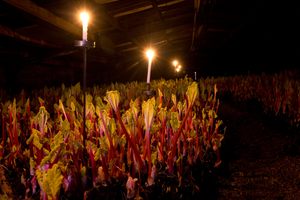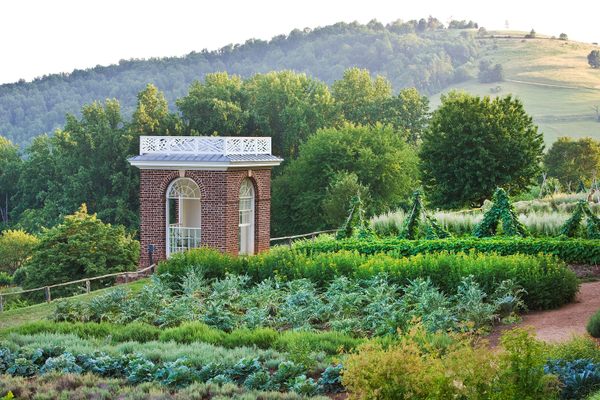About
Strange sheds dot the fields of this English landscape. Their insides are occasionally illuminated by the flickering flame of a candle, revealing miniature forests of sour-sweet forced rhubarb erupting from the soil.
Originally intended as a means of supplying rhubarb out of season, the forcing process involves growing rhubarb plants outdoors for two years to allow energy to be stored and converted into carbohydrates in the roots. After they’ve spent those two years soaking up as much sunlight as they can, the plants are brought into sheds and plunged into darkness.
Once cloaked in blackness, lit only by a candle's soft glow at harvest time, the rhubarb plants are encouraged to start pushing out their pale pink shoots. This is done by keeping the plants warm and nourishing them with rich soil. Rather disgustingly, the plants were once fertilized by a concoction of night soil—human excrement—collected from local earth (composting) toilets and nitrogen-rich waste leftover from the nearby recycled woollen cloth manufacturing industry. Thankfully, the fertilizer used nowadays is less off-putting.
The dark, warm conditions also make the plants grow so fast you can supposedly hear them “sing” as they expand with a chorus of cracks, squeaks, and pops. The rhubarb produced in this way is much more delicate in flavor and far less fibrous in texture than field-grown rhubarb. As such, the sweet and delicious leaf stalks are sought after by dessert chefs.
The unusual practice is almost exclusively carried out in a nine-square-mile triangle in West Yorkshire, with the towns of Wakefield, Morley, and the village of Rothwell marking the corners. The plant, native to Siberia, thrives in the area's cold, wet winters.
In the late 19th century, forced rhubarb was sent to the London markets of Spitalfields and Covent Garden and was also exported to France. Up until the 1960s, there was even a special overnight express train that whisked rhubarb from Ardsley station to awaiting locations during the forced rhubarb season, which lasted from Christmas until Easter.
Even today, the rhubarb is still picked by candlelight, as exposure to strong light impairs the quality of the product. Recently, the rhubarb has started to be used as a flavoring agent in high-end gin-based products.
Related Tags
Know Before You Go
The GPS coordinates lead to a site where, between January and March, one can visit a traditional rhubarb forcing shed and see (and some say hear!) the rhubarb growing.
Community Contributors
Added By
Published
April 3, 2018





































